 As more reports appear of a grim 'post-antibiotic era' ushered in by the rise of drug-resistant bacteria, a new strategy for fighting infection is emerging that targets a patient's cells rather than those of the invading pathogens. The technique interferes with the way that the pathogens take over a patient's cells to cause infection.
As more reports appear of a grim 'post-antibiotic era' ushered in by the rise of drug-resistant bacteria, a new strategy for fighting infection is emerging that targets a patient's cells rather than those of the invading pathogens. The technique interferes with the way that the pathogens take over a patient's cells to cause infection.
Dec 11th, 2013
Read more
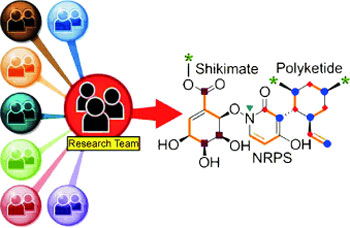 Since the discovery of penicillin, fungi have been a nearly inexhaustible source for the discovery of new drugs. 'Crowdsourcing', the cooperation of a large number of interested nonscientists, has helped to find a new fungus from which American researchers have now isolated and characterized an unusual metabolite with interesting antitumor activity.
Since the discovery of penicillin, fungi have been a nearly inexhaustible source for the discovery of new drugs. 'Crowdsourcing', the cooperation of a large number of interested nonscientists, has helped to find a new fungus from which American researchers have now isolated and characterized an unusual metabolite with interesting antitumor activity.
Dec 11th, 2013
Read more
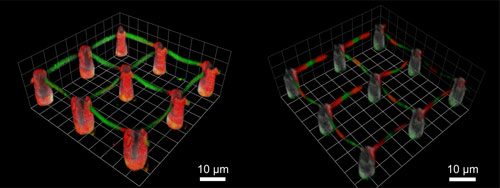 The Petri dish is a classical biological laboratory device, but it is no ideal living environment for many types of cells. Studies lose validity, as cell behavior on a flat plastic surface differs from that in branched lung tissue, for example. Researchers of Karlsruhe Institute of Technology have now presented a method to make three-dimensional structures attractive or repellent for certain types of cells.
The Petri dish is a classical biological laboratory device, but it is no ideal living environment for many types of cells. Studies lose validity, as cell behavior on a flat plastic surface differs from that in branched lung tissue, for example. Researchers of Karlsruhe Institute of Technology have now presented a method to make three-dimensional structures attractive or repellent for certain types of cells.
Dec 11th, 2013
Read more
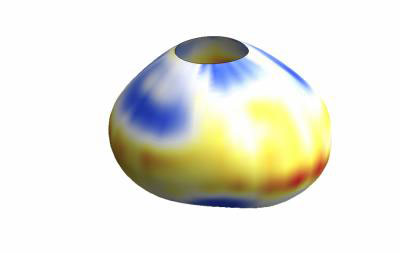 A new method for measuring the cellular forces that shape tissues and organs.
A new method for measuring the cellular forces that shape tissues and organs.
Dec 9th, 2013
Read more
International study demonstrates protein-measurement technique's potential to standardize quantification of the entire human proteome.
Dec 8th, 2013
Read more
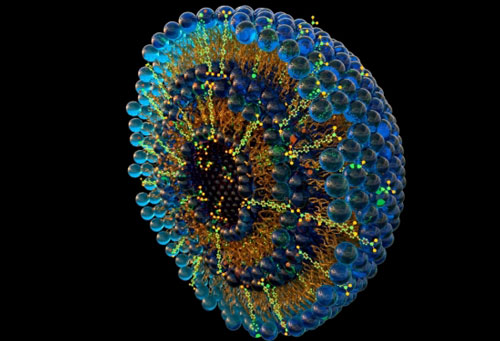 Funds extend a decade of unclassified research at UCSB's Institute for Collaborative Biotechnologies in areas such as biotechnology tools, futuristic materials, energy generation and storage, systems and synthetic biology, and neuroscience.
Funds extend a decade of unclassified research at UCSB's Institute for Collaborative Biotechnologies in areas such as biotechnology tools, futuristic materials, energy generation and storage, systems and synthetic biology, and neuroscience.
Dec 6th, 2013
Read more
In an important scientific breakthrough in regenerative medicine, researchers at A*STAR's Genome Institute of Singapore have successfully converted human embryonic stem cells (hESCs) cultured in the laboratory to a state that is closer to the cells found in the human blastocyst.
Dec 6th, 2013
Read more
Scientists have demonstrated the use of an innovative DNA engineering technique to discover potentially valuable functions hidden within bacterial genomes.
Dec 5th, 2013
Read more
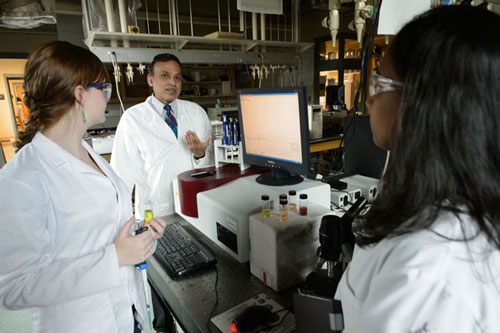 A research team has found a way to stabilize hemoglobin, the oxygen carrier protein in the blood, a discovery that could lead to the development of stable vaccines and affordable artificial blood substitutes.
A research team has found a way to stabilize hemoglobin, the oxygen carrier protein in the blood, a discovery that could lead to the development of stable vaccines and affordable artificial blood substitutes.
Dec 4th, 2013
Read more
In the arms race between bacteria and modern medicine, bacteria have gained an edge. In recent decades, bacterial resistance to antibiotics has developed faster than the production of new antibiotics, making bacterial infections increasingly difficult to treat. Now researchers have discovered a protein that kills bacteria. The isolation of this protein, produced by a virus that attacks bacteria, is a major step toward developing a substitute for conventional antibiotics.
Dec 2nd, 2013
Read more
New research suggests that altering genes in sperm and then inducing fertilization, produces new genes that are present and active in the embryos and inherited to at least the third generation.
Dec 2nd, 2013
Read more
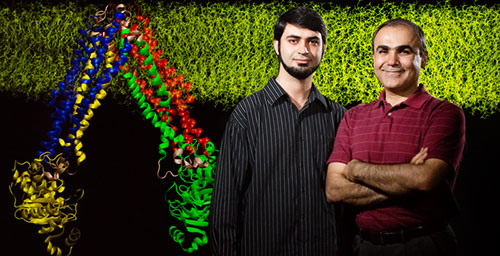 Researchers have tried for decades to understand the undulations and gyrations that allow transport proteins to shuttle molecules from one side of a cell membrane to the other. Now scientists report that they have found a way to penetrate the mystery. They have worked out every step in the molecular dance that enables one such transporter to do its job.
Researchers have tried for decades to understand the undulations and gyrations that allow transport proteins to shuttle molecules from one side of a cell membrane to the other. Now scientists report that they have found a way to penetrate the mystery. They have worked out every step in the molecular dance that enables one such transporter to do its job.
Dec 2nd, 2013
Read more
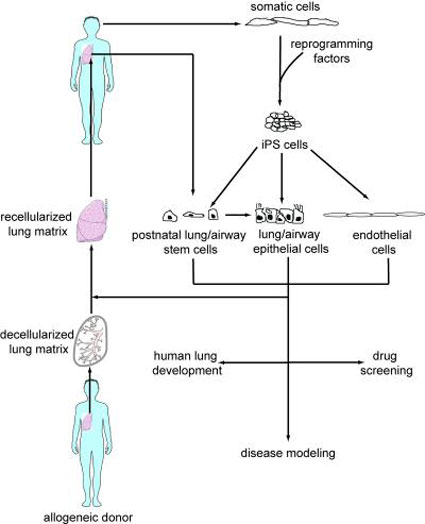 For the first time, scientists have succeeded in transforming human stem cells into functional lung and airway cells. The advance, reported by Columbia University Medical Center researchers, has significant potential for modeling lung disease, screening drugs, studying human lung development, and, ultimately, generating lung tissue for transplantation.
For the first time, scientists have succeeded in transforming human stem cells into functional lung and airway cells. The advance, reported by Columbia University Medical Center researchers, has significant potential for modeling lung disease, screening drugs, studying human lung development, and, ultimately, generating lung tissue for transplantation.
Dec 1st, 2013
Read more
The 'Biotechnology for Africa's sustainable water supply' project provided know-how and best practices to target countries for the sustainable management of polluted water resources using green plants and microorganisms to detoxify contaminated water, soils, sediments and sludge.
Nov 29th, 2013
Read more
The EU-funded TENDON REGENERATION project is a collaboration between industry and academia working to develop a 3D scaffold that mimics natural tendons in order to promote tendon healing. Scientists will design and develop fibrous composites of collagen-resilin in a 3D construct to match the properties of tendons and enhance the tendon regeneration process.
Nov 29th, 2013
Read more
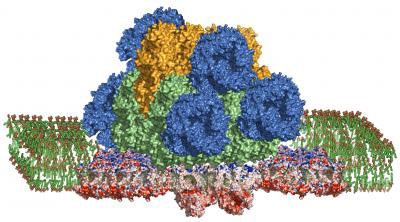 Scientists report on a new technique that allowed them to extract a photosynthetic megacomplex consisting of light antenna and two reaction centers from the membrane of a cynaobacterium. This is the first time an entire complex has been isolated and studied as a functioning whole.
Scientists report on a new technique that allowed them to extract a photosynthetic megacomplex consisting of light antenna and two reaction centers from the membrane of a cynaobacterium. This is the first time an entire complex has been isolated and studied as a functioning whole.
Nov 28th, 2013
Read more
Researchers working to create 'protocells' - primitive synthetic cells consisting of a nucleic acid strand encased within a membrane-bound compartment - have found a solution to what could have been a critical problem, the potential incompatibility between a chemical requirement of RNA copying and the stability of the protocell membrane.
Nov 28th, 2013
Read more
 While marine microorganisms have long been identified as an untapped resource of biotechnological potential, their exploitation has been hampered by the difficulty and expense of isolating their valuable novel chemicals and molecules. This is a wasted opportunity, and is something that the MaCuMBA project aims to rectify.
While marine microorganisms have long been identified as an untapped resource of biotechnological potential, their exploitation has been hampered by the difficulty and expense of isolating their valuable novel chemicals and molecules. This is a wasted opportunity, and is something that the MaCuMBA project aims to rectify.
Nov 28th, 2013
Read more
 As more reports appear of a grim 'post-antibiotic era' ushered in by the rise of drug-resistant bacteria, a new strategy for fighting infection is emerging that targets a patient's cells rather than those of the invading pathogens. The technique interferes with the way that the pathogens take over a patient's cells to cause infection.
As more reports appear of a grim 'post-antibiotic era' ushered in by the rise of drug-resistant bacteria, a new strategy for fighting infection is emerging that targets a patient's cells rather than those of the invading pathogens. The technique interferes with the way that the pathogens take over a patient's cells to cause infection. 
 Subscribe to our Biotechnology News feed
Subscribe to our Biotechnology News feed







